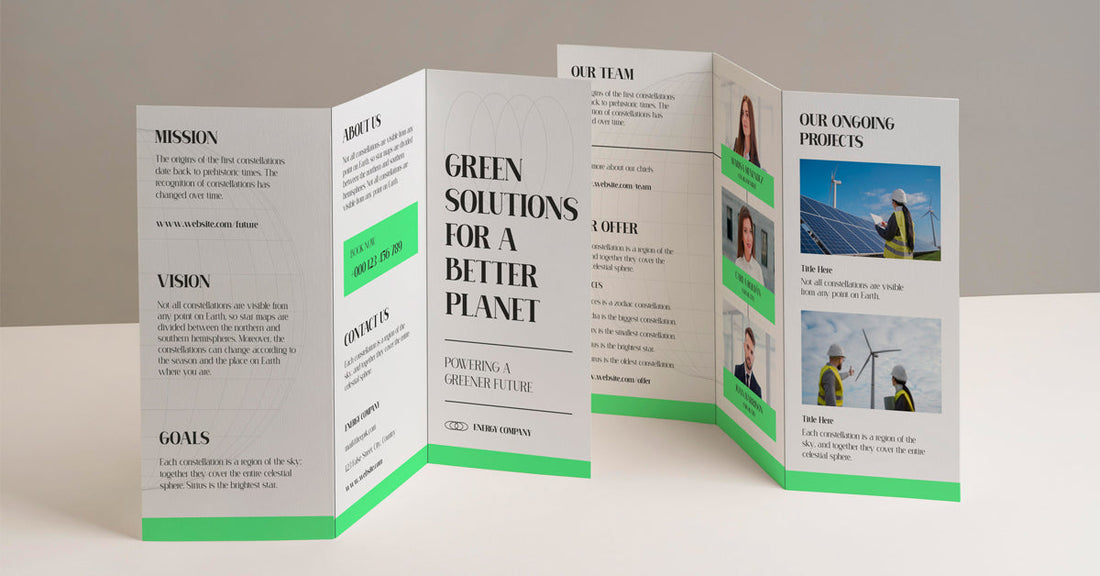
10 Practical Tips for Brochure Printing
Even though digital ads are very popular in today’s marketing world, a good brochure can still have a strong impact. Unlike an online ad or an email that can vanish quickly, a brochure is a physical item that people can touch, read at their own pace, and take home. When created effectively, it can help build trust, share your story, and encourage someone to consider becoming a customer.
If you want to invest in brochure printing, here are 10 simple tips to help ensure your brochure makes a great impression:
1. Start with a Purpose
Before you start making a brochure, think about what you want it to do. Are you showing off a new product? Describing your services? Encouraging people to come to an event? Having clear goals will help you decide how to design it and what to write.

2. Pick the Right Size and Fold
Standard size 8.5” x 11” tri-fold works for most businesses, but it’s not your only option. Bi-fold, z-fold, or even custom sizes can help your brochure stand out. Before you begin designing, plan how much information you want to add, how many images you need to share in your brochures, and how your audience will use them.
3. Selecting Quality Materials for Printing
The choice of paper you print your brochures on could make a bigger difference than most people realize. Brochures that are blurry or printed on the wrong kind of paper look cheap. But when brochures are printed on good-quality paper, they look professional and high-quality. Brochures on shiny paper show bright colors, while brochures on matte or uncoated paper have a simple, modern look.
4. Keep Design Clean and Organized
Don’t overload every panel with text. White space is your friend, it makes your content easy to skim and more professional-looking.
5. Use Colors with Intention
Colors can change how we feel. Blue makes us feel trust, green means growth, and red catches our eye. It's important to use your brand's colors all the time so people recognize you. You can use different colors to make important actions stand out, but do it only a little bit.
6. Write Like You Talk
People don't read brochures like they read stories. Use short sentences and simple words. Use bullet points to make it easier to understand. Focus on what’s good about your offer, not just the details. Always tell people what to do next, like calling, visiting, or scanning a QR code.
7. Choose Images That Matter
It's best to stay away from using regular stock photos if you can. Instead, use real photos of your products, pictures of your team, or special graphics that show your business. Good-quality images will catch people's eyes.
8. Think About Flow
Organize your content so it’s easy for the reader to follow. Begin with catchy headings to grab attention, then provide important details, and end with a clear call to action.
9. Proofread Like Crazy
A single mistake can make a professional brochure look unprofessional. It’s a good idea to have at least two people check your writing before you print it.
10. Print with Professionals
Using a home printer is okay for drafts, but when you need materials for customers, it's better to work with a printing shop. Professional brochure printing gives you clear images, true colors, and a quality finish that makes your business look good.
Final Thoughts
A brochure may be a small piece of your marketing mix, but when designed and printed with care, it can leave a big impression. Focus on purpose, design, and quality, and your next brochure won’t just get read, it’ll get remembered.